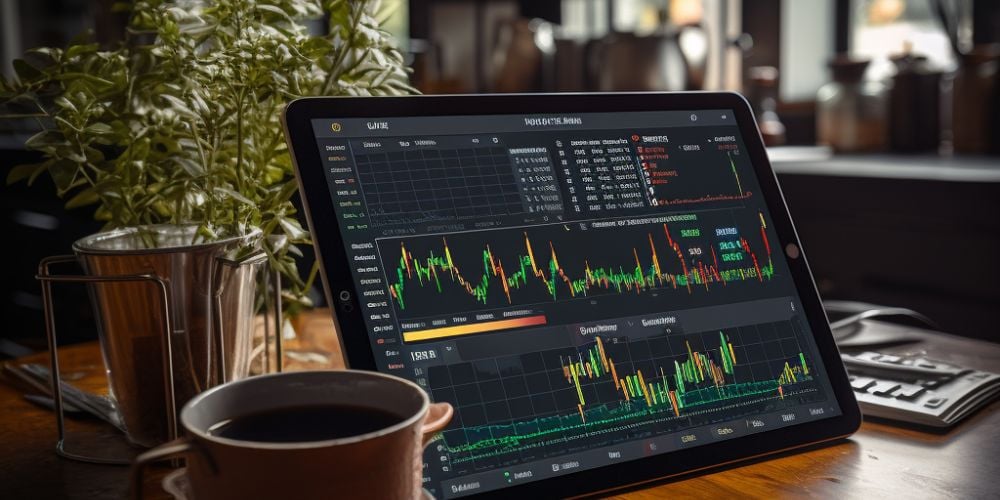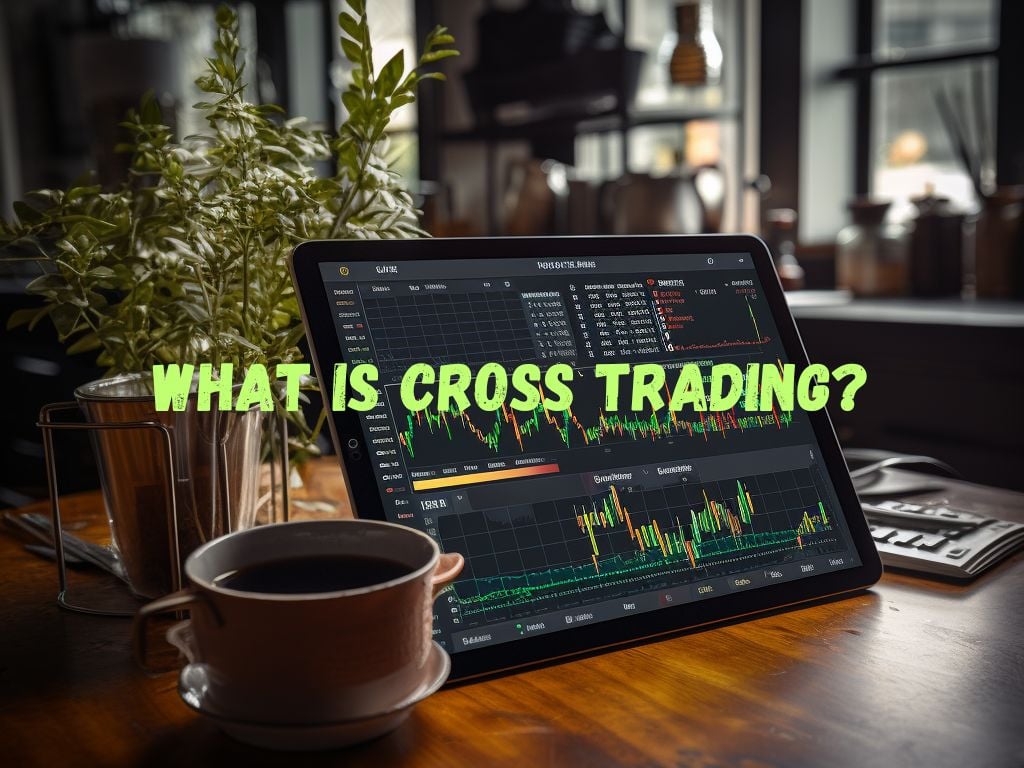Cross trading refers to a practice where a stockbroker buys and sells the same security on behalf of two different clients without recording the transactions on exchanges.
This method allows the broker to facilitate the trade internally and execute it off the market, without involving any other party, including an exchange.
While cross trading can be an effective means of cost-saving for both parties, it also comes with regulatory concerns and potential risks.
In this article, we will explore what cross trading is, how it works, its advantages and disadvantages, examples of cross trading in different financial markets, and the potential impact cross trading can have on market transparency and fairness.
What is Cross Trading?
Cross trading can be defined as an off-exchange transaction where a broker buys and sells the same security on behalf of two different clients without recording the transactions on exchanges.
This allows the broker to match the clients’ orders without going through the formal exchange process.
It is essential to note that cross trading differs from wash trades and block trades, two other trading practices that are often confused with cross trading.

Wash trades are trades where a broker buys and sells the same security simultaneously with the intention of artificially inflating the security’s trading volume.
In contrast, block trades refer to large volume trades that occur outside the open market, often with the involvement of institutional investors.
How Cross Trading Works
The process of cross trading involves matching buy and sell orders placed by two different clients without the involvement of an exchange.
Instead, the broker internally matches the orders and offsets them, without any record on the exchange system. This allows the clients to trade directly with each other and can help save on transaction fees and commission charges.
Let’s take a closer look at the mechanics of cross trading:
Execution without recording transactions on exchanges:
In a typical trading scenario, when an investor wants to buy or sell a security, they place an order on a public exchange.
The exchange matches the buy and sell orders, and the transaction is recorded on the exchange system.
However, in cross trading, the broker acts as an intermediary and matches the buy and sell orders internally without involving the exchange. This means that the transaction is executed “off-market” and is not visible to other market participants.

Offset of buy and sell orders for the same security:
For cross trading to occur, the broker must have two clients with buy and sell orders for the same security.
The broker matches these orders and executes the trade internally, effectively offsetting the orders. This matching process allows the clients to transact at a price that is mutually agreeable to both parties, without having to go through the open market.
The offsetting of the orders eliminates the need for the broker to involve other market participants or place additional orders on the exchange.
Advantages and Disadvantages of Cross Trading:
Cross trading offers several advantages, including cost-effectiveness and efficient transaction execution.
However, it also comes with regulatory concerns and potential risks. Here are some key advantages and disadvantages of cross trading:
Advantages:
Cost-effectiveness compared to open market trades:
One of the primary advantages of cross trading is the potential cost savings for clients.
Since cross trades are executed internally without going through the exchange, there are no transaction fees or commission charges associated with the trade.
This can result in significant cost savings, especially for institutional investors or high-volume traders who frequently engage in cross trades.
Efficient trade execution:
Cross trading allows for faster and more efficient trade execution compared to placing orders on the open market.
By matching buy and sell orders internally, the broker can facilitate the trade without the need for order matching on the exchange.
This can help clients take advantage of market opportunities or execute trades in a timely manner, particularly when there is a need for quick execution.

Disadvantages:
Regulatory concerns and potential risks:
Cross trading is subject to regulatory scrutiny and oversight to ensure fair and transparent trading practices.
Regulators, such as the SEC in the United States, have specific regulations in place to govern cross trading activities.
Compliance with these regulations is important to prevent fraudulent activities, market manipulation, and conflicts of interest. Failure to comply with regulatory requirements can lead to severe penalties and reputational damage for market participants.
Lack of market transparency:
Since cross trades are executed off the market without recording transactions on exchanges, there is a lack of transparency in terms of price discovery and market activity.
This lack of transparency can raise concerns for other market participants who rely on accurate and timely market information to make informed investment decisions.
It can also create an uneven playing field, as some investors may have access to cross trading opportunities while others do not.
Examples of Cross Trading
Cross trading is prevalent in various financial markets, including stocks, foreign exchange (forex), and cryptocurrencies.
Here are some examples of cross trading practices in different financial markets:
Cross trading in stocks:
Cross trading in the stock market helps investors save on commission charges and other transaction fees.
For example, suppose a brokerage firm has two clients who want to trade shares of a particular company. Instead of placing the orders on the open market, the broker can facilitate a cross trade between the two clients. This allows the clients to transact at a mutually agreeable price without incurring additional costs.
Cross trading in foreign exchange (forex):
Forex cross trades occur when a trader matches two different orders with a similar amount between two different currency pairs.
For example, if a trader wants to buy Japanese yen with US dollars and another trader wants to sell Japanese yen for US dollars, a forex broker can facilitate a cross trade between the two parties.
This can be beneficial for traders looking to avoid the bid-ask spreads and associated costs on the open market.

Cross trading in cryptocurrencies:
Cross trading in cryptocurrencies is relatively unregulated, given the decentralized nature of the market.
However, it still occurs among traders looking to take advantage of price discrepancies between different cryptocurrency exchanges.
Cross trading in the cryptocurrency market can be beneficial for traders who want to avoid the influence of institutional interest, which can affect prices on traditional exchanges.
It is important to note that while cross trading can provide advantages in terms of cost savings and efficient trade execution, market participants engaging in cross trading must comply with applicable regulations and consider the potential impact on market transparency and fairness.
Regulatory oversight and adherence to ethical trading practices are crucial to maintain market integrity and protect the interests of all market participants.
Implications and Controversies
Cross trading has both implications and controversies that have shaped the regulatory framework surrounding this trading practice. These implications and controversies revolve around market transparency, fairness, conflicts of interest, and potential risks of market manipulation. Let’s delve deeper into these aspects:
Market transparency and fairness:
One of the key concerns surrounding cross trading is its potential impact on market transparency.
Since cross trades are executed off-exchange without recording transactions on public exchanges, they are not visible to other market participants.
This lack of transparency can create an uneven playing field and raise concerns about fair access to market information.
It may give certain participants an advantage in terms of price discovery and execution, while others are left unaware of the market activity.
Additionally, cross trading can hinder the transparency of market prices and volume by not contributing to public price discovery mechanisms.
A lack of transparent pricing and volume information may undermine the integrity of the market and distort the true supply and demand dynamics.

Conflicts of interest and regulatory concerns:
Cross trading poses potential conflicts of interest for brokers who act as intermediaries between two clients engaged in a cross trade.
Brokers need to navigate these conflicts carefully to ensure they act in the best interest of each client, avoiding favoritism or any actions that could lead to unfair advantages.
Regulatory bodies closely monitor cross trading activities to ensure that brokers adhere to strict guidelines and regulations imposed to manage conflicts of interest.
Regulators, such as the SEC in the United States, closely oversee cross trading to prevent fraudulent activities and market manipulation.
They require market participants to follow specific guidelines, including fair price determination, proper client disclosure, and record-keeping.
The aim of these regulations is to ensure that cross trading is conducted transparently and fairly, protecting the interests of all market participants.
Risks of market manipulation:
Cross trading raises concerns about the potential for market manipulation, particularly when trades are executed off-exchange without a public record.
This lack of transparency provides an environment where manipulative practices, such as wash trades or insider trading, can occur more easily.
Without proper regulation and oversight, market participants could potentially manipulate prices or volume through cross trading, leading to distorted market conditions.
Regulators actively monitor cross trading activities, imposing strict penalties for any market manipulation or fraudulent practices.
Market surveillance systems and reporting requirements are in place to detect and deter such manipulative behavior.
Impact on market structure and liquidity:
Cross trading has the potential to impact market structure and liquidity. When significant volumes are transacted through cross trades, it reduces the volume of trades happening on public exchanges.
This reduced trading volume can influence market liquidity and potentially impact price discovery mechanisms.
Critics argue that if cross trading becomes more prevalent, it could fragment liquidity and bifurcate the market into different classes of investors, with some investors having access to better trading opportunities through cross trades while others do not.
This fragmentation can lead to a less efficient and fair market for all participants.
In response to these implications and controversies, regulators worldwide have imposed stringent regulations and guidelines to ensure fair and transparent cross trading practices.
Compliance with these regulations is crucial to maintain market integrity, protect investors, and promote a level playing field.
It is essential for market participants engaging in cross trading to understand and adhere to these regulations, including proper disclosure, fair pricing, record-keeping, and managing conflicts of interest.
Conducting cross trades ethically and transparently is key to building trust and confidence in the financial markets.

Conclusion:
In conclusion, cross trading is a useful practice that can result in cost savings and efficient trades for market participants.
However, cross trading also comes with regulatory concerns and potential risks, including market manipulation and a lack of transparency.
It is essential that market participants understand the advantages and disadvantages of cross trading before engaging in this practice.
Furthermore, regulators must continue to enforce stringent regulations to ensure that cross trading is conducted fairly and transparently.


 Tags:
Tags:










